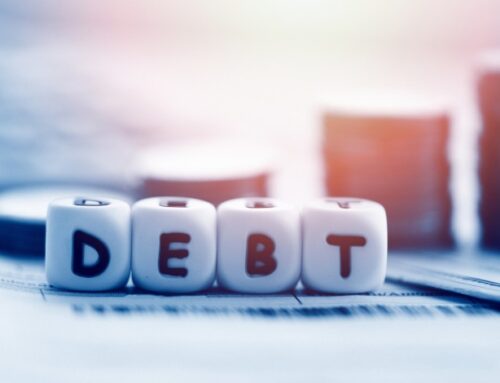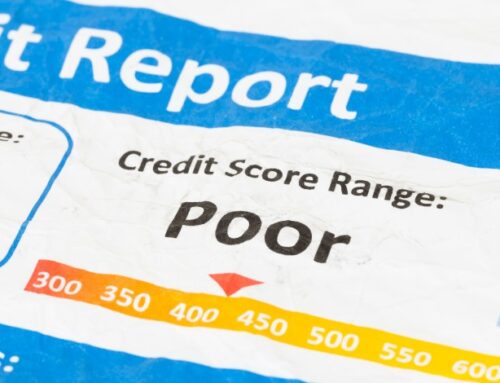In the current economic climate, financial pressure is mounting for many individuals. As markets fluctuate and uncertainties grow, understanding and managing credit risk becomes increasingly important.
Here is a look at what credit risk is, how you become a credit risk, and practical strategies and tools for effective credit risk management.
What is Credit Risk?
Credit risk refers to the possibility of a borrower failing to meet their obligations in accordance with the agreed terms. It is primarily associated with loans and other forms of credit.
When a borrower defaults, lenders may suffer financial losses, making credit risk a significant concern for both individuals and institutions.
How You Get Bad Credit or Become a Credit Risk
Bad credit doesn’t happen overnight—it’s usually the result of a series of financial missteps or adverse circumstances that can damage your creditworthiness over time. Here are some common ways people end up with bad credit or become a credit risk:
Missed or late payments: Failing to pay bills on time is one of the most significant factors contributing to bad credit. Even a single missed payment can lower your credit score, while a pattern of late payments can severely damage your credit over time.
High credit utilization: Credit utilization refers to the percentage of your available credit that you’re using. Maxing out your credit cards or keeping your balances close to the limit can negatively impact your credit score. Ideally, you should aim to keep your credit utilization below 30%.
Defaulting on loans: When you fail to repay a loan according to the agreed terms, this is known as defaulting. Loan defaults are a major red flag to lenders and can lead to a significant drop in your credit score.
Bankruptcy: Filing for bankruptcy is often a last resort for individuals who can’t manage their debt. While it can provide relief from overwhelming financial obligations, bankruptcy has a long-lasting negative impact on your credit score, often staying on your credit report for up to 10 years.
Foreclosure: If you’re unable to keep up with mortgage payments, your lender may foreclose on your property. Foreclosures can severely damage your credit score, similar to a bankruptcy, and can make it difficult to obtain future loans.
Charge-offs and collections: When a creditor decides that you’re unlikely to pay back a debt, they may write it off as a loss and send your account to a collections agency. Having accounts in collections is highly detrimental to your credit score and indicates to potential lenders that you’re a high-risk borrower.
Multiple credit inquiries: Applying for multiple lines of credit in a short period can raise red flags for lenders. Each credit application results in a hard inquiry on your credit report, which can lower your score slightly. Too many hard inquiries suggest that you may be desperate for credit, which increases your risk profile.
Lack of credit history: Surprisingly, having little or no credit history can also make you a credit risk. Lenders prefer borrowers with a proven track record of managing credit responsibly. Without that history, it’s difficult for lenders to assess your creditworthiness.
Managing Credit Risk: Strategies and Tools
To effectively manage credit risk, individuals can implement several strategies and use various tools:
Credit monitoring services: Use services that provide regular updates on your credit score and report any suspicious activity or changes. This helps you stay informed about your credit health and take action if necessary.
Emergency fund: Building an emergency fund can provide a financial cushion to cover unexpected expenses or income loss, reducing the reliance on credit during tough times.
Credit insurance: For large loans or mortgages, credit insurance can be a useful tool to protect against the risk of default due to unforeseen circumstances.
Debt management plans: If you’re struggling with debt, consider enrolling in a debt management plan through a reputable credit counseling agency. These plans can help you consolidate your debts and negotiate more favorable repayment terms.
Good vs. Bad Credit Purchases
Using credit wisely is crucial to maintaining financial health and avoiding the pitfalls of bad credit. Understanding the difference between good and bad credit purchases can help you make informed decisions that support your long-term financial goals.
Good credit purchases
Investments in education: Financing education can be a strategic use of credit, as it often leads to higher earning potential and better job opportunities. Student loans, when managed responsibly, can provide a return on investment that outweighs the cost of borrowing.
Necessary home improvements: Financing necessary home improvements, such as repairing a roof or upgrading insulation, can increase the value of your home and save money on utilities. These improvements can also enhance your quality of life and protect your investment.
Real estate: Buying property is generally considered a sound investment, as real estate tends to appreciate over time. A mortgage can be a responsible way to build equity and create long-term wealth.
Starting a business: Using credit to start or grow a business can be a wise investment if the business plan is solid and has strong potential for profitability. Business loans can help finance necessary equipment, inventory, or expansion.
Vehicle purchase: Financing a vehicle can be a good purchase if it’s necessary for your work or daily life and you choose a reliable, fuel-efficient model within your budget. A car that helps you earn an income or manage essential tasks can be a valuable asset.
Bad credit purchases
Impulse purchases: Impulse buying on credit can quickly spiral out of control, leading to debt for items you may not even need or use. The instant gratification of an impulse buy is often followed by the regret of having to pay it off, sometimes with interest.
Luxury items and non-essential goods: Using credit to buy expensive clothes, high-end electronics, or other luxury items that you don’t need can lead to unnecessary debt. These items often depreciate quickly and don’t provide any long-term financial benefits.
Speculative investments: Using credit for high-risk investments, such as stocks, cryptocurrencies, or real estate flipping, can be dangerous. If the market turns against you, not only could you lose your investment, but you’ll also be left with debt to repay.
Unnecessary subscription services: Subscription services that you don’t use frequently, such as multiple streaming platforms, premium memberships, or box deliveries, can add up quickly. If these are charged to your credit card and not monitored, they can contribute to growing debt.
Vacations and leisure activities: Financing vacations or leisure activities, such as concerts or sporting events, can strain your finances, especially if you can’t pay off the balance immediately. While these experiences are enjoyable, they don’t contribute to your financial health.
Make Good Financial Decisions with AZCCU
In times of financial uncertainty, understanding and managing credit risk is crucial. By recognizing how credit risk arises, employing effective strategies and tools, and making informed decisions about credit purchases, individuals can better navigate the financial pressures of today’s economy.
Arizona Central Credit Union is ready to help with all your banking needs, from checking to savings to loans. If you have any questions, contact us online or call (866) 264-6421.




